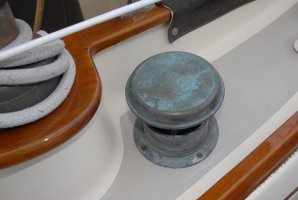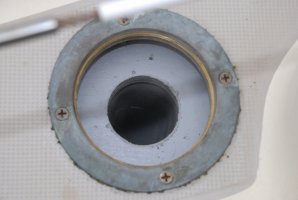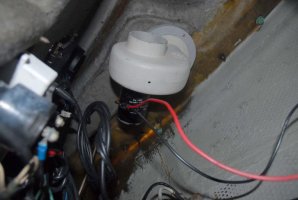Frank Langer
1984 Ericson 30+, Nanaimo, BC
Hi,
Although I know that diesel engines don't need to be vented with a blower motor in the same way as gasoline engines, I'm nevertheless very puzzled by the routing of the vent hoses in our 1984 E30+. I will be replacing them, as they are getting old and cracked, so I have an opportunity to re-think how they are positioned.
Currently the blower motor is situated under the quarterberth where it draws air from the starboard side of the boat, low in the hull--presumably from under the fuel tank and to some extent from the engine compartment and exhausts it from a vent on top of the starboard side transom facing aft. The intake hose for fresh air has an intake vent on the port side of the transom top, also facing aft, and the 3" diameter plastic hose descends from there to an opening in the floor of the engine compartment, likely drawing air down low in the hull aft of the engine.
So my puzzlement: if the idea is to exhaust hot air to lower temperature in the engine compartment, then the blower and exhaust hose (not the engine exhaust) should be high up in the engine compartment because hot air rises and that's the air that should be discharged. The fresh air intake could then come in low in the engine compartment to replace the exhausted hotter air, creating a bit of a circular motion which could help to keep the engine compartment a bit cooler, which is good for the alternator, battery charger, etc..
Before I try to reconfigure it this way, is there any good reason for the current positioning with both the blower/exhaust hose and the fresh air intake hose openings being down below the floor aft of the engine compartment?
Thanks for shedding any light on this for me!
Frank
Although I know that diesel engines don't need to be vented with a blower motor in the same way as gasoline engines, I'm nevertheless very puzzled by the routing of the vent hoses in our 1984 E30+. I will be replacing them, as they are getting old and cracked, so I have an opportunity to re-think how they are positioned.
Currently the blower motor is situated under the quarterberth where it draws air from the starboard side of the boat, low in the hull--presumably from under the fuel tank and to some extent from the engine compartment and exhausts it from a vent on top of the starboard side transom facing aft. The intake hose for fresh air has an intake vent on the port side of the transom top, also facing aft, and the 3" diameter plastic hose descends from there to an opening in the floor of the engine compartment, likely drawing air down low in the hull aft of the engine.
So my puzzlement: if the idea is to exhaust hot air to lower temperature in the engine compartment, then the blower and exhaust hose (not the engine exhaust) should be high up in the engine compartment because hot air rises and that's the air that should be discharged. The fresh air intake could then come in low in the engine compartment to replace the exhausted hotter air, creating a bit of a circular motion which could help to keep the engine compartment a bit cooler, which is good for the alternator, battery charger, etc..
Before I try to reconfigure it this way, is there any good reason for the current positioning with both the blower/exhaust hose and the fresh air intake hose openings being down below the floor aft of the engine compartment?
Thanks for shedding any light on this for me!
Frank
Last edited:



